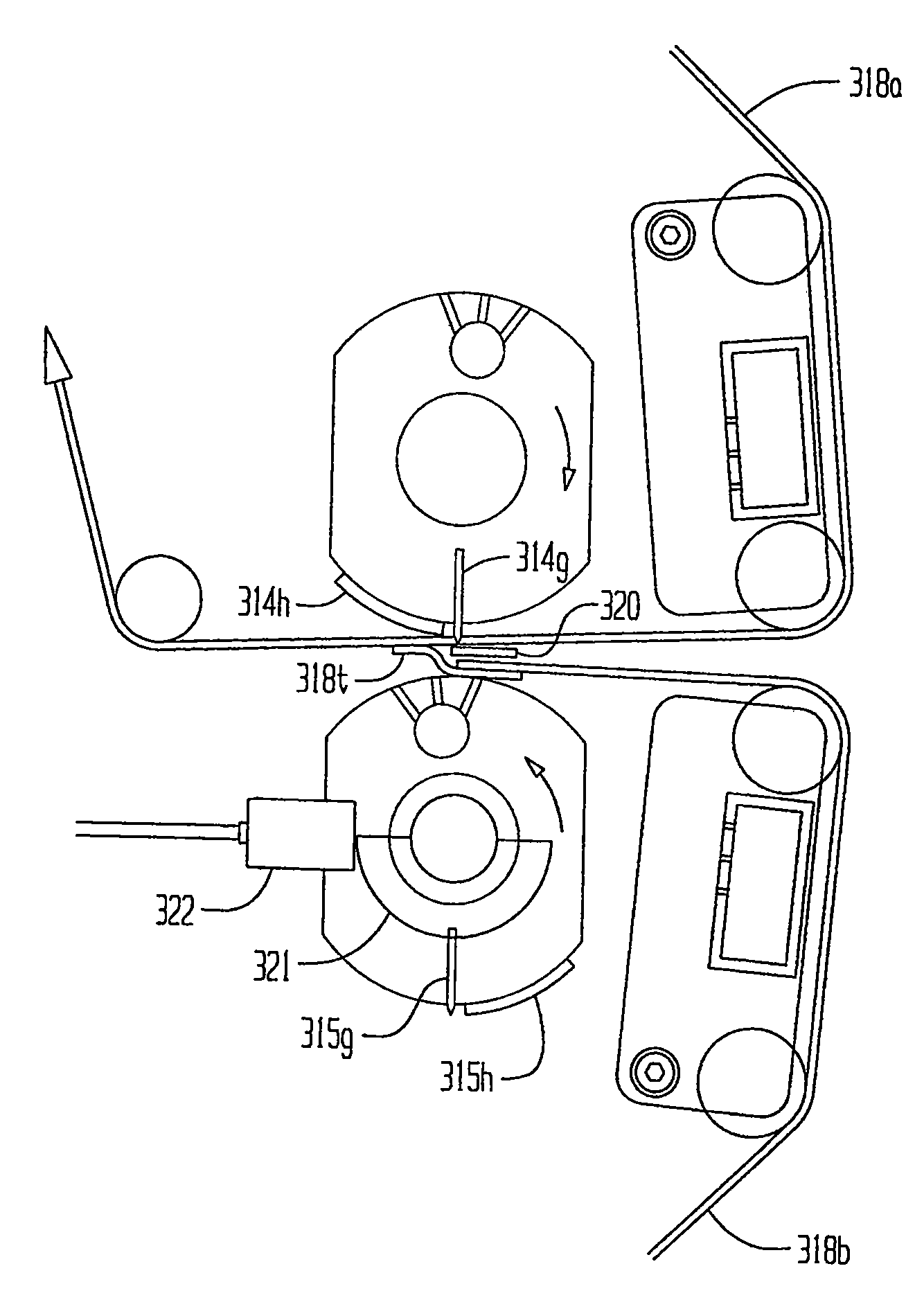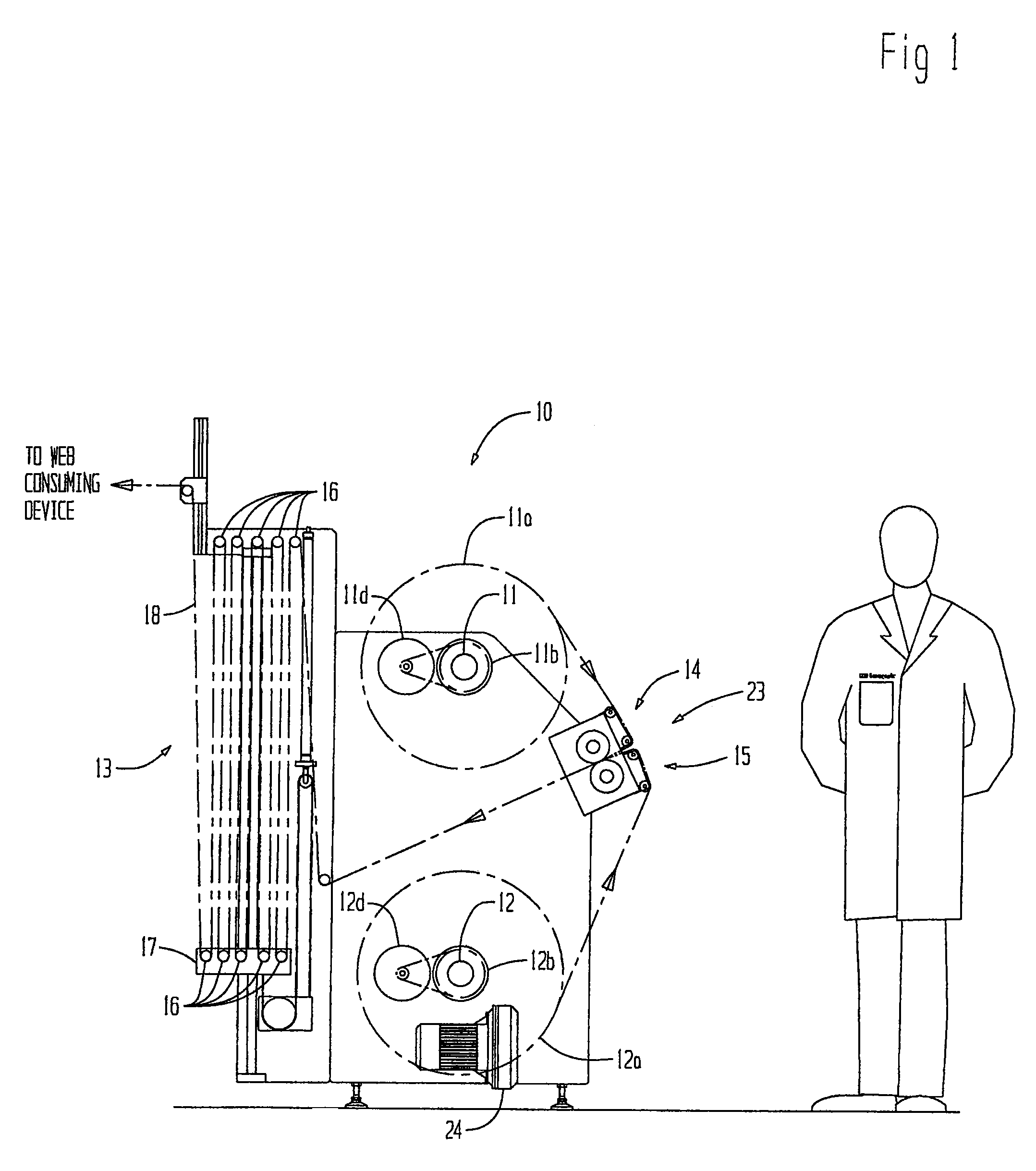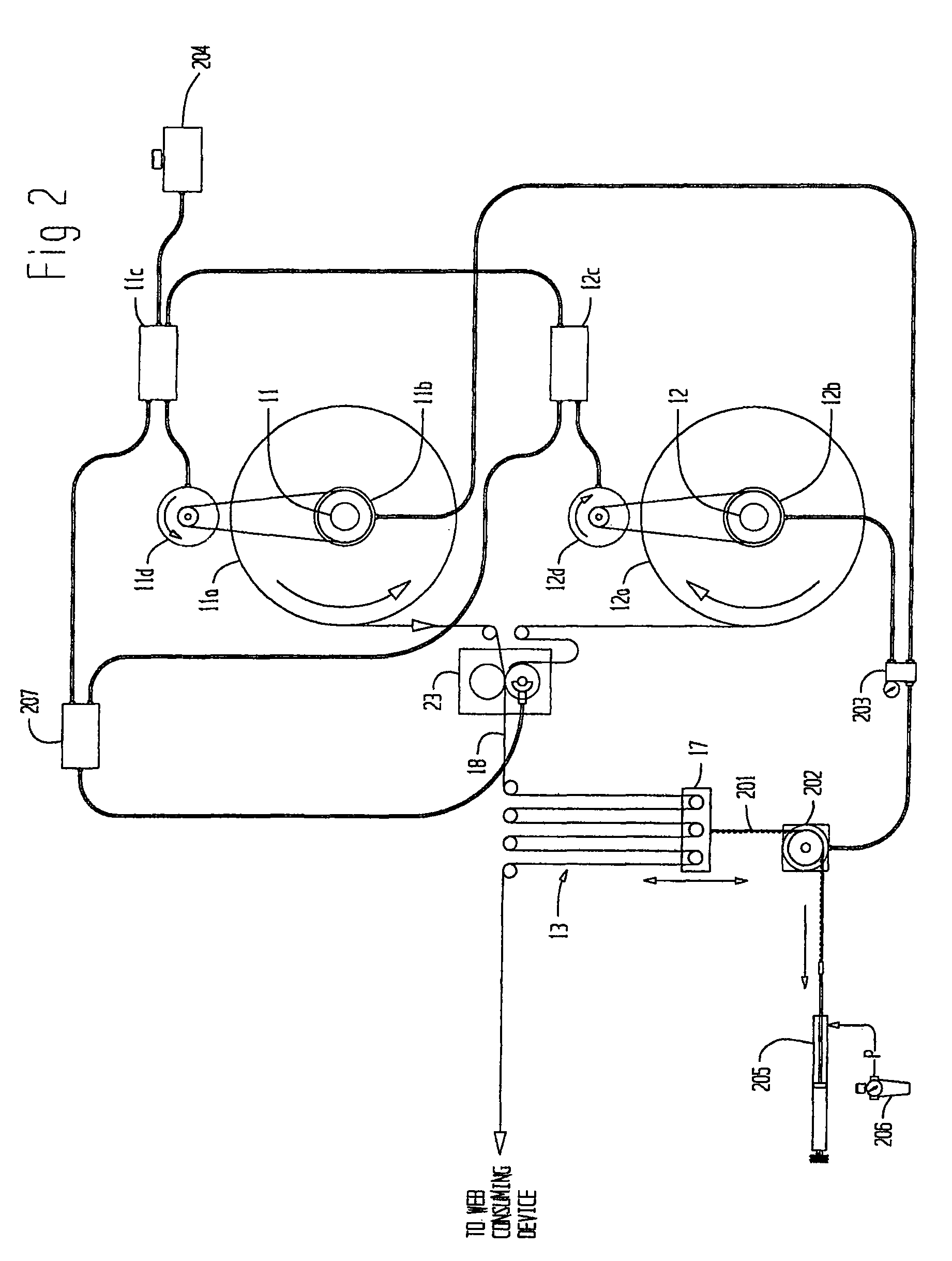Apparatus for splicing webs
a technology of splicing webs and splicing devices, applied in the direction of photosensitive materials, mechanical control devices, instruments, etc., can solve the problems of expensive drive systems and controls for flying splicers, and achieve the effect of reducing wear on both the anvil strip and the cutting blad
- Summary
- Abstract
- Description
- Claims
- Application Information
AI Technical Summary
Benefits of technology
Problems solved by technology
Method used
Image
Examples
Embodiment Construction
[0028]A web unwinding and splicer apparatus 10, shown in FIG. 1 illustrates a general configuration, including roll unwind spindles 11 and 12, and accumulator 13 supported by conventional frame work. The apparatus 10 also includes mirror-image splicing heads 14 and 15 as part of a splicing apparatus 23. The splicing heads 14 and 15 are configured to provide a novel and inventive rolling splicing process, as will be disclosed herein.
[0029]In operation, one of the spindles 11 or 12 is supplying web 18 to the accumulator 13 and in turn, supplies the web 18 to whatever web consuming machinery the apparatus 10 is connected to, such as a Vista® window applicating machine manufactured by Tamarack Products Inc. of Wauconda, Ill. For example, spindle 11 is supplying web 18 from a roll of web material 11a and roll 11a will eventually be depleted. Splicing head 15 is prepared with the lead end of a replenishing roll 12a on spindle 12. When roll 11a is nearly depleted, the splicing mechanism 23...
PUM
| Property | Measurement | Unit |
|---|---|---|
| thickness | aaaaa | aaaaa |
| thicknesses | aaaaa | aaaaa |
| displacement | aaaaa | aaaaa |
Abstract
Description
Claims
Application Information
 Login to View More
Login to View More - R&D
- Intellectual Property
- Life Sciences
- Materials
- Tech Scout
- Unparalleled Data Quality
- Higher Quality Content
- 60% Fewer Hallucinations
Browse by: Latest US Patents, China's latest patents, Technical Efficacy Thesaurus, Application Domain, Technology Topic, Popular Technical Reports.
© 2025 PatSnap. All rights reserved.Legal|Privacy policy|Modern Slavery Act Transparency Statement|Sitemap|About US| Contact US: help@patsnap.com



